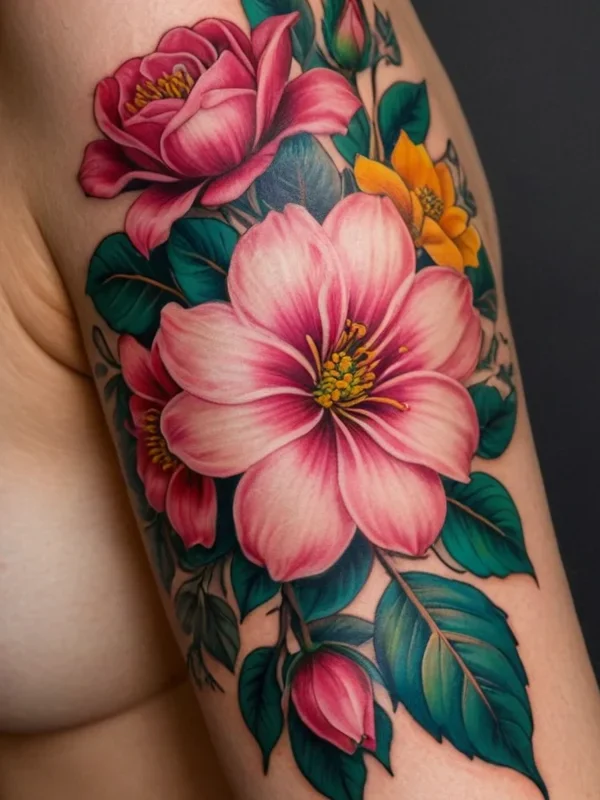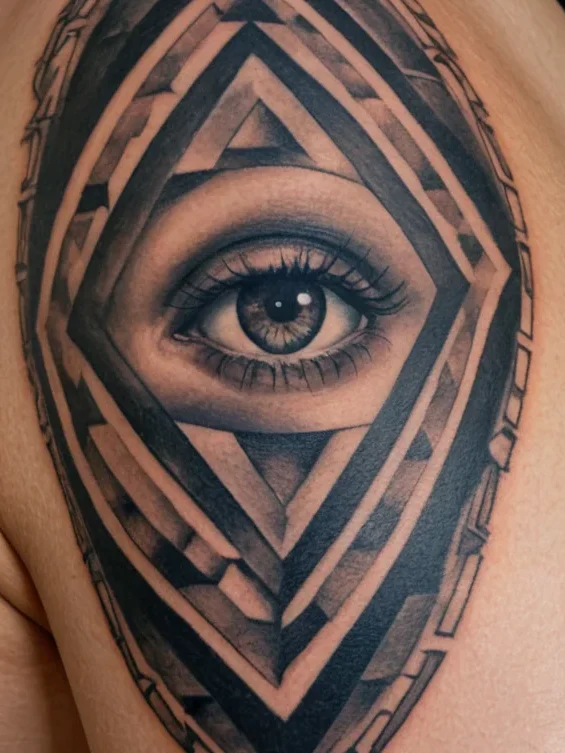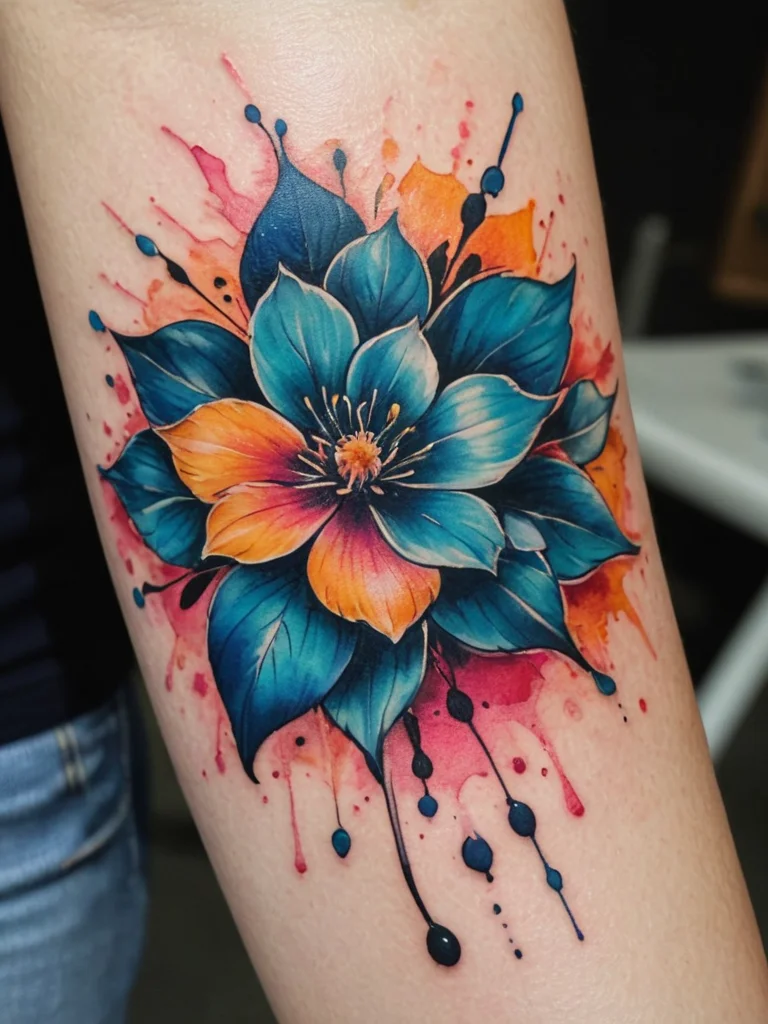Tattoos are often considered permanent works of art, deeply personal statements etched onto the canvas of our skin. For many, they represent significant life events, cherished memories, personal beliefs, or simply aesthetic preferences. However, the journey with a tattoo isn’t always one of lasting satisfaction. Tattoo regret, a phenomenon that affects a surprising number of individuals, can stem from a complex interplay of psychological, emotional, and practical factors. Understanding why it happens is the first step toward addressing it and ensuring your relationship with your body art remains positive and fulfilling. This article delves into the psychology behind tattoo regret, exploring its common causes and offering practical strategies for coping and moving forward.
Understanding tattoo regret – it’s more common than you think
The decision to get a tattoo is rarely a casual one, yet the feelings that follow can sometimes shift over time. Tattoo regret isn’t about a poorly executed design, although that can certainly contribute. It’s often a deeper, more personal sense of dissonance between the tattoo and the individual’s current identity, values, or life circumstances. Many people who experience tattoo regret don’t dislike the art itself, but rather the meaning it once held, or the circumstances under which it was acquired. It’s a feeling of disconnect, a sense that the person looking back in the mirror with the tattoo is no longer the person who chose it. This can manifest as a desire to cover it up, remove it, or simply avoid looking at it. It’s important to recognize that this is a valid and common human experience. People evolve, life takes unexpected turns, and sometimes, the art that once resonated deeply no longer fits the narrative of who you are becoming. Tattoo artists themselves acknowledge this; many are adept at discussing a client’s long-term intentions and the potential for change. The permanence of the ink means that even carefully considered decisions can, over years or decades, lead to a feeling of misalignment. This feeling can range from mild disappointment to significant distress, impacting self-esteem and social interactions. Recognizing that you are not alone in this experience is crucial for initiating the process of healing and acceptance.
The roots of regret: common psychological triggers behind dissatisfaction
Several psychological triggers can lead to tattoo regret, often rooted in impulsive decisions, evolving personal identity, or unmet expectations. One of the most significant triggers is impulsive decision-making, often influenced by external factors like peer pressure, a fleeting trend, or a heightened emotional state. Think about getting a tattoo on a whim after a significant life event, a breakup, or during a period of intense emotional upheaval. While cathartic at the moment, these tattoos might not align with your core self once the emotional intensity has subsided. Another common trigger is the evolution of personal identity. As you grow and change, your values, beliefs, and aesthetic preferences can shift dramatically. A tattoo that once represented a rebellious phase, a past relationship, or a specific life philosophy might feel alien to your present self. This disconnect isn’t a reflection of poor judgment at the time of application, but rather a natural consequence of personal growth. For instance, a name tattoo of a former partner, or a symbol representing a belief system you no longer subscribe to, can become a poignant reminder of a past that no longer defines you. Unrealistic expectations also play a role. Sometimes, individuals may get a tattoo without fully understanding the healing process, the potential for fading or distortion over time, or how the design might look in different life stages. Social media and idealized portrayals of tattoos can sometimes create a perception that tattoos are always flawless and universally flattering, leading to disappointment when the reality differs. Furthermore, external validation can be a powerful motivator, but also a source of regret. If a tattoo was primarily chosen to impress others or fit in with a certain group, and that group or social dynamic changes, the tattoo’s perceived value can diminish significantly.
Impulse and emotion
Impulsive tattoos are frequently born from moments of heightened emotion. These could be positive emotions, like the elation following a personal triumph, or negative ones, such as grief or anger. The intensity of the feeling can overshadow rational thought, leading to a decision that might be regretted later when that emotional state has passed. A tattoo chosen in a moment of pure joy, for example, might symbolize a fleeting happiness that doesn’t endure. Conversely, a tattoo meant to symbolize overcoming hardship might, over time, become a painful reminder rather than a badge of resilience.
Shifting identity and life stages
Our identities are not static; they are fluid and subject to change throughout life. What resonates deeply with a teenager or a young adult might not hold the same significance for someone in their thirties or fifties. Tattoos acquired during different life stages can become markers of who we *were*, rather than who we *are*. This is particularly true for tattoos that are highly indicative of a specific subculture, trend, or phase of life. As individuals mature, their perspectives broaden, their experiences accumulate, and their core values may evolve, making older tattoos feel disconnected from their present selves.
Misunderstandings about the process
A significant, though less psychological, factor in regret can be a misunderstanding of the tattoo process itself. This includes not fully grasping how ink ages under the skin, how designs might distort with weight fluctuations or skin elasticity changes, or how a specific placement might look years down the line. For example, a design that looks fantastic on a taut, youthful body might appear differently on skin that has experienced aging or significant weight changes. The permanence of the ink also means that what seems like a good idea today might not be as appealing decades from now, especially if the design is very trendy or time-specific.
External influences and trends
Getting a tattoo based on what is popular or what friends are doing can be a recipe for regret. Trends are transient, and what is fashionable today can feel dated or even embarrassing tomorrow. Relying on external validation for a deeply personal decision like a tattoo can lead to a sense of dissatisfaction when the external environment or social circle shifts. It’s the difference between choosing something because it genuinely speaks to *you*, versus choosing it because it’s what everyone else is doing.

Beyond the ink: factors influencing long-term tattoo happiness
While psychological triggers are a major component of tattoo regret, several other factors contribute to long-term satisfaction with body art. The quality of the tattoo itself, the relationship with the artist, and the placement and visibility of the tattoo all play significant roles in how you feel about your ink over time. Tattoo artists who are skilled and communicative can help guide clients through the decision-making process, ensuring a design that is not only aesthetically pleasing but also thoughtfully considered. A well-executed tattoo, even if its meaning evolves, is often easier to accept and appreciate than a poorly done one. The artist’s skill and style are paramount. A tattoo that captures the intended vision with technical precision and artistic flair is more likely to be cherished. Conversely, a tattoo marred by poor line work, uneven shading, or a style that doesn’t match the client’s aesthetic can become a constant source of dissatisfaction, regardless of its initial meaning. Placement and visibility are also crucial. A tattoo that is easily visible might serve as a frequent reminder, which can be positive if the tattoo is loved, but negative if it’s regretted. Conversely, a tattoo placed in a less visible area might be easier to ignore if it’s no longer desired, but it also means less regular enjoyment if it is loved. Some people prefer highly visible tattoos as a form of self-expression and identity reinforcement, while others opt for discretion. Considering how the tattoo will interact with your daily life and professional environment is a practical aspect that often influences long-term happiness. The longevity and maintenance of the tattoo also matter. Understanding how different colors fade, how fine lines might blur over decades, and how sun exposure can impact the ink’s vibrancy are practical considerations that contribute to the ongoing appreciation of a tattoo. A well-maintained tattoo, protected from excessive sun exposure and touched up if necessary, will retain its aesthetic appeal far longer, contributing to sustained satisfaction.
The artist’s skill and vision
A tattoo is a collaborative art form. The skill, experience, and artistic vision of the tattoo artist are fundamental to the final outcome. A talented artist can translate your ideas into a visually stunning piece of art that ages well and remains aesthetically pleasing. They can also offer invaluable advice on design, placement, and even the psychological implications of certain symbols or styles. Choosing an artist whose portfolio aligns with your desired aesthetic and who demonstrates a commitment to client satisfaction is a critical step in ensuring a positive experience and a tattoo you’ll love for years to come. A skilled artist prioritizes the client’s vision while also applying their professional expertise to ensure a technically sound and enduring piece.
Placement and visibility
Where you place a tattoo can significantly impact your feelings about it. A highly visible tattoo, like on the forearm or neck, is a constant declaration of your chosen art and can be a powerful form of self-expression. However, if regret sets in, this visibility can amplify the negative feelings. Conversely, a tattoo placed on a less visible area, such as the back or thigh, might be easier to conceal if you experience regret, but it also means fewer opportunities for you to appreciate it daily. Consider how the placement will affect your lifestyle, career aspirations, and how often you want to be reminded of the tattoo. The way a tattoo interacts with the body’s natural contours and movement is also part of its aesthetic appeal and can influence long-term enjoyment.
Aging and maintenance
Ink doesn’t stay pristine forever. Over time, tattoos naturally fade and can blur, especially in areas with high friction or constant sun exposure. Understanding that tattoos require ongoing care—such as diligent sun protection and occasional touch-ups—is important. A tattoo that is well-maintained will look better for longer, contributing to sustained satisfaction. For example, vibrant colors might require touch-ups more frequently than black and grey work. Similarly, fine lines can become less defined over decades. Being aware of this natural aging process and prepared to care for your ink can help manage expectations and ensure your tattoo continues to be something you appreciate rather than a source of disappointment.

Moving forward: strategies for coping with and overcoming tattoo regret
Experiencing tattoo regret can be disheartening, but it doesn’t have to be a permanent state of unhappiness. There are several effective strategies for coping with and even overcoming the dissatisfaction associated with unwanted ink. The first step is often to acknowledge and accept the feeling without judgment. You are not alone, and these feelings are a normal part of navigating personal change. Once acknowledged, you can explore practical solutions. Cover-up tattoos are a popular and artistic way to address regret. A skilled tattoo artist can design a new piece that effectively conceals the existing tattoo, transforming it into something you love. This requires careful planning and collaboration with an artist experienced in cover-ups, as they need to work with the existing lines and colors. Another option is tattoo removal, typically performed using laser technology. While effective, it can be a lengthy, costly, and sometimes uncomfortable process, often requiring multiple sessions. The success of removal depends on factors like ink color, depth, and skin type. For some, reframing the meaning of the tattoo can be a powerful psychological tool. Instead of focusing on what it represents now, try to see it as a symbol of a past experience, a lesson learned, or a testament to your capacity for change. This shift in perspective can help detach the negative emotions associated with the ink. Sometimes, simply adjusting your wardrobe or self-presentation can help you feel more comfortable if the tattoo is in a visible area. Lastly, for those who feel ready, getting new tattoos that genuinely reflect your current identity can be an empowering way to reclaim your body art and turn a source of regret into a positive statement.
Cover-up tattoos
A cover-up tattoo is a creative solution for existing ink you no longer want. This involves a skilled artist tattooing a new design over the old one, using the existing lines and colors as a foundation. The success of a cover-up depends heavily on the original tattoo’s size, color, and darkness, as well as the artist’s expertise. Bold designs, darker colors, and strategic placement of the new artwork are often necessary to effectively obscure the unwanted tattoo. It’s an opportunity to transform something you regret into a piece you adore, essentially giving your skin a second artistic life. Choosing an artist specializing in cover-ups is crucial for achieving the best results.
Laser tattoo removal
Laser tattoo removal is a more direct approach to eliminating unwanted ink. The laser works by breaking down the ink particles into smaller fragments, which the body’s immune system can then gradually clear away. This process typically requires multiple sessions, spaced several weeks apart. While effective for many tattoos, it can be painful and expensive, and success varies depending on the ink colors, the age of the tattoo, and individual skin type. Red and black inks tend to respond best to laser treatment, while lighter colors like yellow and green can be more challenging. Consultation with a qualified technician is essential to understand the potential outcomes and manage expectations.
Reframing the meaning
Sometimes, the most powerful solution is not to change the ink, but to change your relationship with it. Reframing the meaning of a tattoo can be incredibly liberating. Instead of viewing it as a mistake or a symbol of something negative, try to see it as a marker of a past life phase, a lesson learned, or a testament to your personal growth and evolution. For example, a tattoo that once symbolized a tumultuous relationship could be reframed as a reminder of your strength and resilience in overcoming that period. This psychological shift can transform a source of regret into a symbol of your journey and capacity for change, allowing you to embrace your body art in a new light.
Embracing new ink
For some, the best way to move past regret is to proactively create new, meaningful body art. Getting a new tattoo that truly resonates with your current self can be an empowering act of reclaiming your canvas. It’s about asserting your present identity and ensuring that your visible art reflects who you are today. This new piece can be designed to complement, contrast, or even intentionally draw attention away from a previous tattoo, effectively shifting the focus and turning your body into a curated gallery of your evolving self. This approach allows you to take control and ensure that your body art is a source of pride and self-expression.

Conclusion: embracing your journey – making peace with your ink
Tattoo regret is a complex emotional and psychological experience, but it is far from insurmountable. By understanding the common triggers—impulsivity, evolving identity, and external pressures—you can gain valuable insight into your own feelings. Furthermore, acknowledging the role of tattoo quality, placement, and maintenance in long-term satisfaction can help inform future decisions, whether you’re considering new ink or addressing existing pieces. The journey from regret to acceptance or transformation is a personal one. Whether you choose a cover-up, explore laser removal, or find peace through reframing the tattoo’s meaning, the goal is to foster a positive relationship with your body art and yourself. Remember that your body is your canvas, and its story is constantly evolving. Embrace the journey, learn from your experiences, and continue to adorn yourself with art that brings you joy and reflects the unique individual you are. The power lies in your perspective and your proactive approach to making your body art a true celebration of your life.
